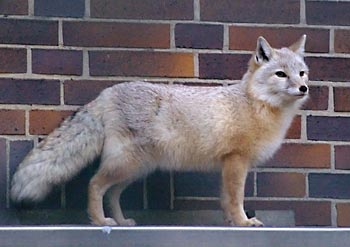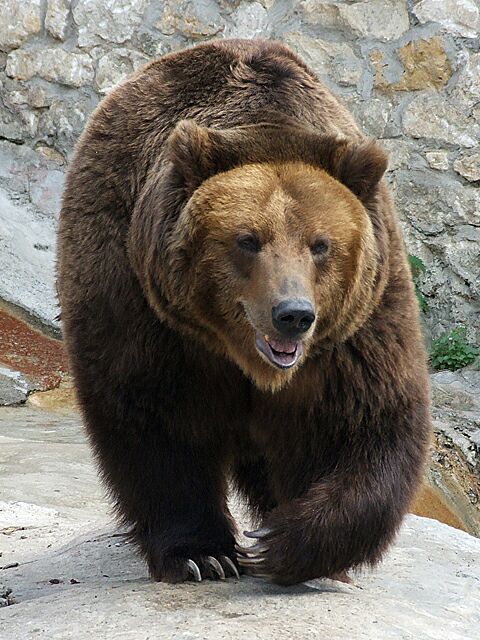|
Alticola Macrotis
The large-eared vole (''Alticola macrotis'') is a species of rodent in the family Cricetidae. It is found in Mongolia and the Russian Federation Russia, or the Russian Federation, is a country spanning Eastern Europe and North Asia. It is the list of countries and dependencies by area, largest country in the world, and extends across Time in Russia, eleven time zones, sharing Borders .... References Further reading * Alticola Mammals of Mongolia Mammals of Russia Mammals described in 1862 Taxa named by Gustav Radde Taxonomy articles created by Polbot {{Alticola-stub ... [...More Info...] [...Related Items...] OR: [Wikipedia] [Google] [Baidu] |
Gustav Radde
Gustav Ferdinand Richard Radde (27 November 1831 – 16 March 1903) was a German naturalist and Siberian explorer. Radde's warbler and several other species are named after him. Biography Radde was born in Danzig, the son of a schoolmaster. He had little formal education, and began a career as an apothecary. At an early age he was influenced by Anton Menge and became increasingly interested in natural history, and in 1852 he gave up his career and spent two years in the Crimea with the botanist Christian von Steven, collecting both plants and animals. He made further trips to southern Russia with Johann Friedrich von Brandt and Karl Ernst von Baer. He was botanist and zoologist on the East Siberian Expedition of 1855, led by the astronomer Ludwig Schwarz. In 1864 he eventually settled in Tbilisi. In the same year he explored the region surrounding Mount Elbrus, the highest mountain in the Western Palearctic. As well as collecting many plants he recorded the languages, ball ... [...More Info...] [...Related Items...] OR: [Wikipedia] [Google] [Baidu] |
Rodent
Rodents (from Latin , 'to gnaw') are mammals of the Order (biology), order Rodentia ( ), which are characterized by a single pair of continuously growing incisors in each of the upper and Mandible, lower jaws. About 40% of all mammal species are rodents. They are native to all major land masses except for Antarctica, and several oceanic islands, though they have subsequently been introduced to most of these land masses by human activity. Rodents are extremely diverse in their ecology and lifestyles and can be found in almost every terrestrial habitat, including human-made environments. Species can be arboreal, fossorial (burrowing), saltatorial/ricochetal (leaping on their hind legs), or semiaquatic. However, all rodents share several morphological features, including having only a single upper and lower pair of ever-growing incisors. Well-known rodents include Mouse, mice, rats, squirrels, prairie dogs, porcupines, beavers, Cavia, guinea pigs, and hamsters. Once included wi ... [...More Info...] [...Related Items...] OR: [Wikipedia] [Google] [Baidu] |
Cricetidae
The Cricetidae are a family of rodents in the large and complex superfamily Muroidea. It includes true hamsters, voles, lemmings, muskrats, and New World rats and mice. At over 870 species, it is either the largest or second-largest family of mammals, and has members throughout the Americas, Europe and Asia. Characteristics The cricetids are small mammals, ranging from just in length and in weight in the New World pygmy mouse up to and in the muskrat. The length of their tails varies greatly in relation to their bodies, and they may be either furred or sparsely haired. The fur of most species is brownish in colour, often with a white underbelly, but many other patterns exist, especially in the cricetine and arvicoline subfamilies. Like the Old World mice, cricetids are adapted to a wide range of habitats, from the high Arctic to tropical rainforests and hot deserts. Some are arboreal, with long balancing tails and other adaptations for climbing, while others ar ... [...More Info...] [...Related Items...] OR: [Wikipedia] [Google] [Baidu] |
Mongolia
Mongolia is a landlocked country in East Asia, bordered by Russia to the north and China to the south and southeast. It covers an area of , with a population of 3.5 million, making it the world's List of countries and dependencies by population density, most sparsely populated sovereign state. Mongolia is the world's largest landlocked country that does not border an Endorheic basin, inland sea, and much of its area is covered by grassy steppe, with mountains to the north and west and the Gobi Desert to the south. Ulaanbaatar, the capital and List of cities in Mongolia, largest city, is home to roughly half of the country's population. The territory of modern-day Mongolia has been ruled by various nomadic empires, including the Xiongnu, the Xianbei, the Rouran, the First Turkic Khaganate, the Second Turkic Khaganate, the Uyghur Khaganate and others. In 1206, Genghis Khan founded the Mongol Empire, which became the largest List of largest empires, contiguous land empire i ... [...More Info...] [...Related Items...] OR: [Wikipedia] [Google] [Baidu] |
Russian Federation
Russia, or the Russian Federation, is a country spanning Eastern Europe and North Asia. It is the list of countries and dependencies by area, largest country in the world, and extends across Time in Russia, eleven time zones, sharing Borders of Russia, land borders with fourteen countries. Russia is the List of European countries by population, most populous country in Europe and the List of countries and dependencies by population, ninth-most populous country in the world. It is a Urbanization by sovereign state, highly urbanised country, with sixteen of its urban areas having more than 1 million inhabitants. Moscow, the List of metropolitan areas in Europe, most populous metropolitan area in Europe, is the capital and List of cities and towns in Russia by population, largest city of Russia, while Saint Petersburg is its second-largest city and Society and culture in Saint Petersburg, cultural centre. Human settlement on the territory of modern Russia dates back to the ... [...More Info...] [...Related Items...] OR: [Wikipedia] [Google] [Baidu] |
Alticola
''Alticola'' is a genus of rodent in the family Cricetidae The Cricetidae are a family of rodents in the large and complex superfamily Muroidea. It includes true hamsters, voles, lemmings, muskrats, and New World rats and mice. At over 870 species, it is either the largest or second-largest family .... Species The following species are recognized by the American Society of Mammalogists: *Subgenus ''Alticola'' ** White-tailed mountain vole, ''A. albicauda'' ** Silver mountain vole, ''A. argentatus'' ** Gobi Altai mountain vole, ''A. barakshin'' **'' Alticola kohistanicus'' ** Central Kashmir vole, ''A. montosus'' ** Lake Baikal mountain vole, ''A. olchonensis'' **'' Alticola parvidens'' ** Royle's mountain vole, ''A. roylei'' ** Mongolian silver vole, ''A. semicanus'' ** Stolička's mountain vole, ''A. stoliczkanus'' ** Flat-headed vole, ''A. strelzovi'' ** Tuva silver vole, ''A. tuvinicus'' *Subgenus ''Aschizomys'' ** Lemming vole, ''A. lemminus'' ** Large-eared vole ... [...More Info...] [...Related Items...] OR: [Wikipedia] [Google] [Baidu] |
Mammals Of Mongolia
This is a list of the naturally occurring mammal species recorded in Mongolia. There are 121 mammal species in Mongolia, of which two are critically endangered, four are endangered, nine are vulnerable, and six are near threatened. The following tags are used to highlight each species' conservation status as assessed by the International Union for Conservation of Nature: Some species were assessed using an earlier set of criteria. Species assessed using this system have the following instead of near threatened and least concern categories: Order: Artiodactyla (even-toed ungulates) The even-toed ungulates are ungulates whose weight is borne about equally by the third and fourth toes, rather than mostly or entirely by the third as in perissodactyls. There are about 220 artiodactyl species, including many that are of great economic importance to humans. *Family: Bovidae (cattle, antelope, sheep, goats) **Subfamily: Antilopinae ***Genus: ''Gazella'' ****Goitered gazelle, ''G. subg ... [...More Info...] [...Related Items...] OR: [Wikipedia] [Google] [Baidu] |
Mammals Of Russia
This is a list of the mammal species recorded in Russia. There are 266 mammal species in Russia, of which five are critically endangered, thirteen are endangered, twenty-six are vulnerable, and six are near threatened. One of the species listed for Russia is extinct and one can no longer be found in the wild. All the mammals of Russia are in the subclass Theria and infraclass Eutheria, being all Placentalia, placental. The following tags are used to highlight each species' conservation status as assessed by the International Union for Conservation of Nature: Order: Rodentia (rodents) Rodents make up the largest order of mammals, with over 40% of mammalian species. They have two incisors in the upper and lower jaw which grow continually and must be kept short by gnawing. Most rodents are small though the capybara can weigh up to . *Suborder: Hystricognathi **Family: Hystricidae (Old World porcupines) ***Genus: ''Hystrix (porcupine), Hystrix'' ****Indian crested porcupin ... [...More Info...] [...Related Items...] OR: [Wikipedia] [Google] [Baidu] |
Mammals Described In 1862
A mammal () is a vertebrate animal of the class Mammalia (). Mammals are characterised by the presence of milk-producing mammary glands for feeding their young, a broad neocortex region of the brain, fur or hair, and three middle ear bones. These characteristics distinguish them from reptiles and birds, from which their ancestors diverged in the Carboniferous Period over 300 million years ago. Around 6,640 extant species of mammals have been described and divided into 27 orders. The study of mammals is called mammalogy. The largest orders of mammals, by number of species, are the rodents, bats, and eulipotyphlans (including hedgehogs, moles and shrews). The next three are the primates (including humans, monkeys and lemurs), the even-toed ungulates (including pigs, camels, and whales), and the Carnivora (including cats, dogs, and seals). Mammals are the only living members of Synapsida; this clade, together with Sauropsida (reptiles and birds), constitutes the large ... [...More Info...] [...Related Items...] OR: [Wikipedia] [Google] [Baidu] |
Taxa Named By Gustav Radde
In biology, a taxon (back-formation from ''taxonomy''; : taxa) is a group of one or more populations of an organism or organisms seen by taxonomists to form a unit. Although neither is required, a taxon is usually known by a particular name and given a particular ranking, especially if and when it is accepted or becomes established. It is very common, however, for taxonomists to remain at odds over what belongs to a taxon and the criteria used for inclusion, especially in the context of rank-based (" Linnaean") nomenclature (much less so under phylogenetic nomenclature). If a taxon is given a formal scientific name, its use is then governed by one of the nomenclature codes specifying which scientific name is correct for a particular grouping. Initial attempts at classifying and ordering organisms (plants and animals) were presumably set forth in prehistoric times by hunter-gatherers, as suggested by the fairly sophisticated folk taxonomies. Much later, Aristotle, and later still ... [...More Info...] [...Related Items...] OR: [Wikipedia] [Google] [Baidu] |




